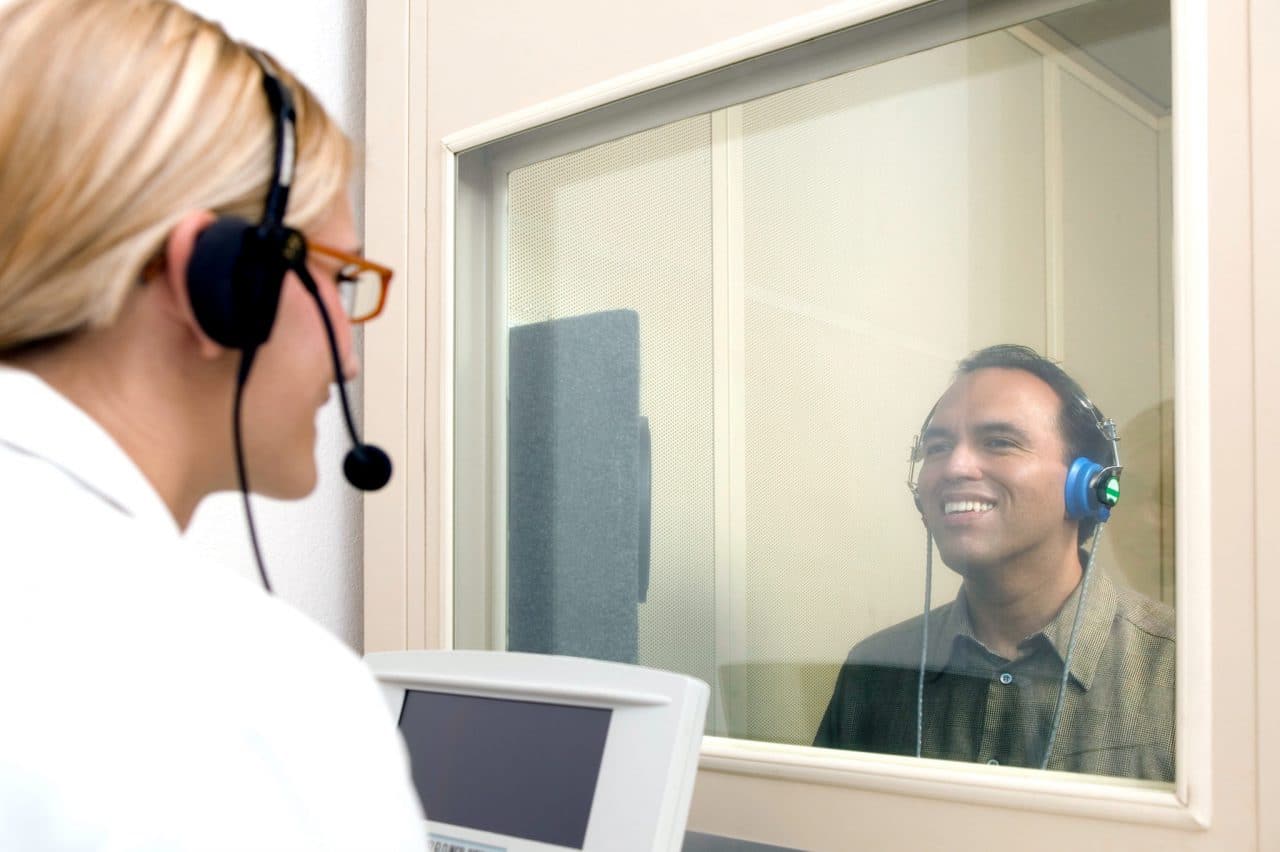Hearing Tests

What Does Audiology Testing Entail?
A comprehensive audiology evaluation consists of a series of individual diagnostic tests that measure different aspects of your hearing. Following a physical examination and a review of your medical history, you will be given any or all of the following tests:
Pure Tone Testing
Pure tone testing uses beeps of various pitches and volumes to measure your ability to hear. Wearing headphones and/or a bone oscillator, you will be asked to press a button when you hear the beep.
Your responses are charted on a graph called an audiogram. It compares pitch (frequency) and loudness (intensity) and shows your audiologist how loud sound needs to be at each pitch for you to be able to hear it. It also reveals if the hearing loss is surgically or medically correctable, or if hearing aids are the most appropriate treatment option.
Speech Testing
In addition to beeps, words are used to measure your speech understanding. You will be asked to repeat back words when they are at a very soft volume, and also when they are at a volume that is comfortable. This test can be used as a predictor for how well you will perform with hearing aids.
Tympanometry
Tympanometry is a test used to assess the function of the middle ear system. A small probe will be placed into your ear. The probe pushes air into the ear, causing the eardrum to move. Results show the audiologist if the middle ear system is working properly, or if medical attention is necessary.
Acoustic Reflex Testing
Acoustic reflex testing evaluates how the middle ear muscles are working. Similar to tympanometry, a probe is placed in the ear canal. Loud beeps are presented to the ear through the probe, and the contraction of the middle ear muscles in response to the beeps is recorded. This test is helpful in determining the cause of hearing loss.
Auditory Brainstem Response (ABR)
Auditory brainstem response (ABR) testing assesses how the ear, hearing nerves, and brain pathway for hearing are working. In an ABR test, electrodes are attached to your head, scalp or earlobes, and you are given earbuds to wear. Your brainwave activity is measured in response to sounds presented through the earbuds. This test is used on children, individuals who cannot complete a traditional hearing test, or if it is suspected your symptoms are due to hearing loss in the brain pathway.
Otoacoustic Emissions (OAEs)
Otoacoustic emission (OAEs) testing is performed to determine how well the cochlea, the organ of hearing, works. OAE testing utilizes a tiny probe fitted with a microphone and speaker that is used to stimulate the organ of hearing and measure its response. The response is called an otoacoustic emission, and are low level sounds given off by the cochlea in response to sound. If the cochlea is functioning normally, emissions will be produced. If a hearing loss greater than 25-30 dB is present, no emissions will be produced.
Abnormal OAEs can indicate a blockage in the ear canal, excess fluid in the middle ear or damage to the hair cells of the cochlea. OAE testing is often included in newborn hearing screening programs.
Call DeFatta Hearing Aid Experts at (715) 930-1940 for more information or to schedule an appointment.